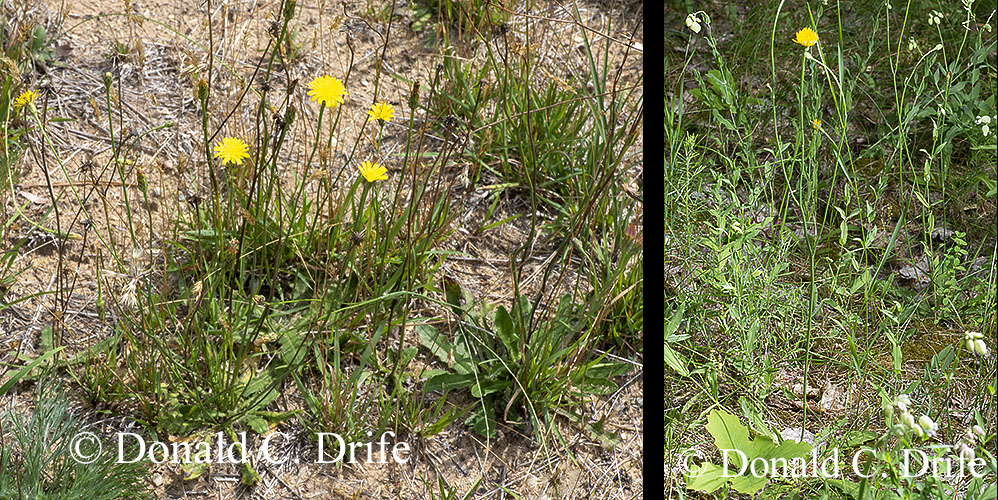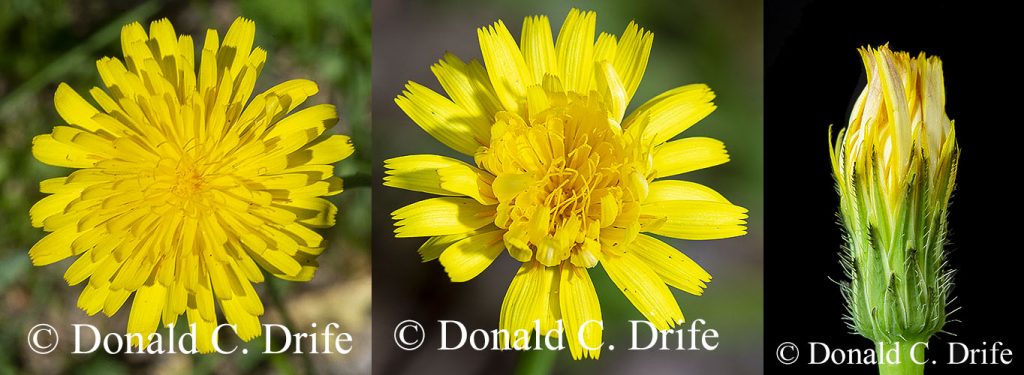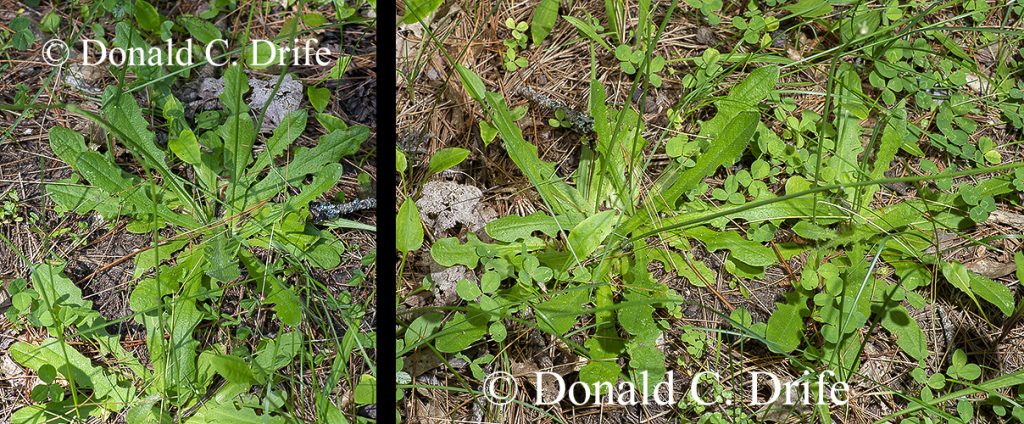
During a walk along the East Branch of the AuSable River, I found a yellow composite. At a glance, I thought it was Cynthia (Krigia biflora) because of the simple branches of the plant. However, the flowers were pure yellow and not the orange or yellow-orange of Cynthia. I dissected a flower head, finding only fertile ray flowers and no disk flowers. Each flower had a feather-like pappus. The leaves were mainly basal, and coarsely toothed, with stiff hairs on the upper surface.


I consulted the Field Manual of Michigan Flora by Voss and Reznicek and discovered my plant was Cat’s-ear (Hypochaeris radicata). Imported from Europe, this lawn weed now grows throughout the state. The phyllaries (scales surrounding the heads) had spine-like projections on the midveins. This helps distinguish this species from similar plants.
I enjoy seeing new plant species, or at least ones I have not identified before. Composites are a fascinating group of diverse appearance. I need to make a careful study of them.
Copyright 2020 by Donald Drife
Webpage Michigan Nature Guy
Follow MichiganNatureGuy on Facebook
